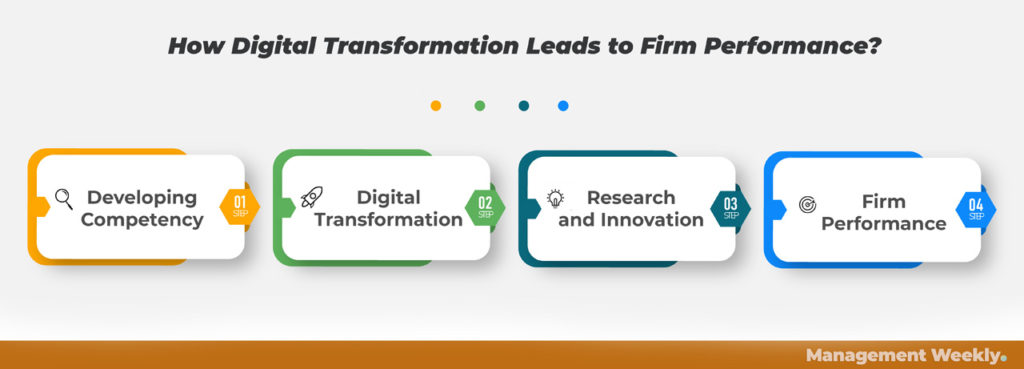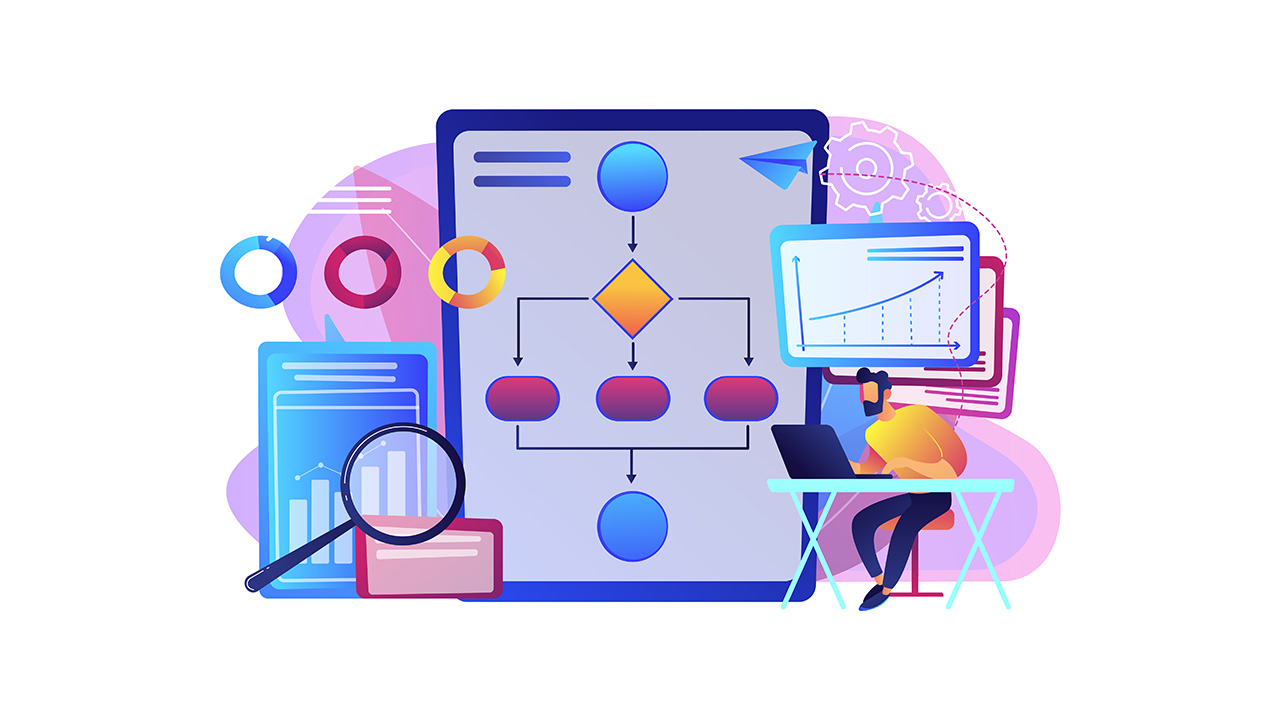Digital transformation has played a crucial role in organizations in the past few decades. However, there is also a debate about its impact on firm performance. Most notably, there is increasing scrutiny of the investments into information technology infrastructure. Research in strategy reveals that an organization’s digital capability significantly impacts the firm’s financial performance. Firm performance is one of the key reasons why digital transformation is important.
Is Digital Transformation Essential?
One way of looking at a firm’s capabilities is through the Resource-Based View (RBV). Jay Barney (1991) proposed in his seminal paper that firms need to be inimitable to have a sustainable competitive advantage. Inimitable means that your products or business processes are unique. Your competitors cannot easily copy them.
One of the ways to achieve this is by making your ‘resources different from competitors. For instance, if you can manufacture a commodity, say paper, 20% cheaper than any competitor. It will provide you with an opportunity to outsell your competitors. This unique resource can be new technology, a new process, or process improvement. Thereby it provides your firm a competitive advantage, making your business sustainable in the long run.
Digital leaders are the firms that are proactive in going digital. These firms have a digitalization strategy framework that helps them become inimitable(to some extent). Consequently, they perform better. The digital leaders were found to provide a higher operating margin (18%) than the laggards (10%); they were also found to render a higher profit margin (11%) vs. the laggards (7%) by Bock et al. (2017).
Why Digital Transformation is Important in Business Environment Nowadays?
Now let us also look at why digital transformation is important in business environment. Especially in 2021, where we are witnessing an increasing use of AI and IoT.
Digital Strategy explains up to 73% of the variance in firms’ profitability.
► digital strategy definition? (with examples)
► how to unlock the digitalization strategy framework?
Digital transformation (DT) is the process of upgrading the business process of a firm using information technology. There are several ways in which DT can be beneficial. Most notable are:
- Develop digital capabilities
- Increase process efficiency
- Turbo-charge the decision support system
Develop digital capabilities
Digitalization helps a firm develop resources. These resources form a part of the digital capability of a firm. We develop digital capability through transforming the organization in various spheres. It is a commonly misunderstood concept. DT is relegated to the technology sphere only. However, it should also include skill development, alignment of organizational goals, and individual ownership of the change management process.
⚪ CASE STUDY: IKEA ‘S FORTE (WAS ALSO THEIR WEAK POINT)
Sometimes, your USP can also be a roadblock in the path of your success. The same was the case with IKEA. IKEA is a gold standard when it comes to furniture companies. Their biggest innovation was a novel business model. Their business was simple, provide people with semi-finished furniture in a retail space that is highly attractive. This helped them sell products at cheaper prices than the competitors. However, there was a catch: not everyone is comfortable in assembling an item of furniture. An average Joe may find it fairly complicated.
The solution: acquisition of TaskRabbit.
TaskRabbit is a gig platform. On one side of the platform are people who are ready to do tasks. While on the other side are customers who need these jobs done. These tasks can range from something that is menial like waiting for days to get the new iPhone to something that is skill-based like plumbing work. IKEA acquired a 100% stake in TaskRabbit in 2017. They claimed that this acquisition provided them with a new digital platform. They could now connect their customers with potential taskers. Therefore, the consumers have the option of getting their furniture assembled professionally at their homes.
Increase process efficiency
Process improvement is another goal of digital business strategy. There is immense value trapped in processes. DT helps in unlocking the business potential trapped in these processes. Firstly, it helps in connecting the information silos. Traditional systems are not built around the concept of data analytics. Therefore, it is a challenge to integrate the data and use them fruitfully. Secondly, DT helps in providing a collaborative platform. Individuals and teams can work together, share data in real-time, and solve problems. Modern brainstorming techniques do not require you to even meet face to face. Thirdly, and most importantly, we can use DT to analyze the processes and ascertain the bottlenecks, low-efficiency processes, and wasteful activities.
⚪ CASE STUDY: SIEMENS – THE FUTURE OF MOBILITY
Siemens AG is a German multinational corporation that needs no introduction. However, many of us may not be aware of their subsidiary, Siemens Mobility, although it has been a core business unit for more than a century. They provide technology products for public transport systems. Most notably, they make rail coaches, railway management, and automation products. They also provide end-to-end solutions like turnkey projects to leading railway corporations across the globe. Some of their recent challenges find a parallel in firms across different industries. Firstly, there is increasing pressure to make technologies more efficient. Secondly, regulators push for sustainable assessment through the life cycle of products. Thirdly, there are traditional requirements of innovation to improve the safety, comfort, and reliability of products.
Solution: Robotic Process Automation
Some tasks are routine. They are rule-based and repetitiveness. These tasks are prime candidates for automation. Siemens lab in Brazil came up with the preliminary technology. It was further developed and adopted by Siemens. For instance, your firm may be spending money on menial tasks like data entry. Also, on tasks like data migration from one system to another. Automation of these tasks can be the key to saving time and money. Further, automation of tasks frees up your resources to be utilized towards other needs like innovation. Automation also helps reduce energy consumption and reduces the carbon footprint of the firm.
Turbo-charge the decision support system
Thirdly, and finally, DT enables a powerful decision support system for the organization. Modern information infrastructure has provided the platform and tools such as cloud, social media, mobility, and analytics. On one hand, these systems help us in gathering valuable insights. These insights are pertinent to both long-term strategies as well as short-term optimization. Further, it helps us in providing inputs and tools for research and innovation. Over the years, we have seen an increasing trend. Digital strategy is now at the core of the business strategy. It is also critical to value chain optimizations.
⚪ CASE STUDY: DIGITAL TRANSFORMATION AT ZARA
When we think of DT, we often imagine some large technology firm. At least on the surface, some firms may appear to be not driven by technology. However, as true managers, we need to dive deeper and look at the submerged part of the iceberg. Zara is a global apparel brand, driven by the concept of fast fashion. However, it faces threats from an even faster fashion! The threat comes from no other than the land of dragons. Chinese manufacturers have reduced the time to market for a new design to weeks, unlike traditional brands that take months. This has been the concern for Inditex, the parent company of Zara as well as brands like Massimo Dutti and Pull & Bear.
The solution: AI and IoT to assist in strategic product development
Inditex has invested heavily in recent years into modernizing its information infrastructure. Firstly, they have developed an in-house integrated online retail platform. The Inditex Open Platform helps them manage the operations across 6000 stores. It provides personalization, convenience to order online and pick at the store, the option to book a fitting room online, and other features. Meanwhile, Inditex has also invested heavily in big data, AI, and IoT acquisitions. They are using the Jetlore AI platform to predict consumer behavior. Further, they have implemented Tyco, which uses RFID chips for inventory management.
How Digitalization helps your business?

Criticisms of Digital Transformation
Although there are benefits of digital transformation, it is not bereft with criticism. There are some areas of concern raised by executives. Also, academic researchers have raised some issues as well.
- Some academics consider Digital Transformation as a fancy repackaging of older concepts of Information Systems. Eric Abrahamson points out the provocative marketing used by consultants and management gurus who use fashionable terms to lure managers. According to his perspective, the mere overselling of leaders vs laggards concept may be one such example.
- Many C-level executives wrongly believe that DT is a panacea for modernizing their firms. Erich Greenbaum criticizes this approach in his article. One drawback of such a false notion is the pressure it puts on the firm to ‘metamorphize’ into something new. A more suited approach that works well for medium and smaller firms is to work on smaller, manageable technology upgrades.
- Many of us have the wrong idea about DT. We perceive DT as a technology problem. However, Frankiewicz and Chamorro-Premuzic argue that DT is people’s problem at its core, not a tech problem. The problem is that we have designed transformation processes around tech, which makes it very difficult to think otherwise. They propose that we look at organizational transformation as skill development. Additionally, we should focus on employee empowerment.
